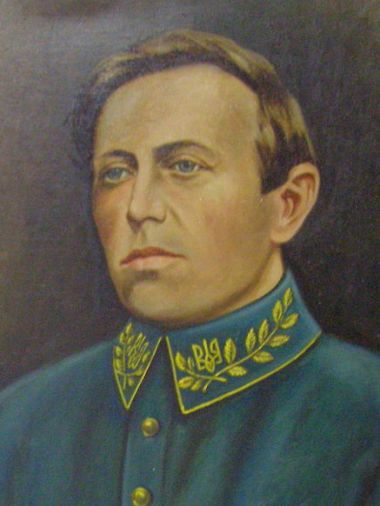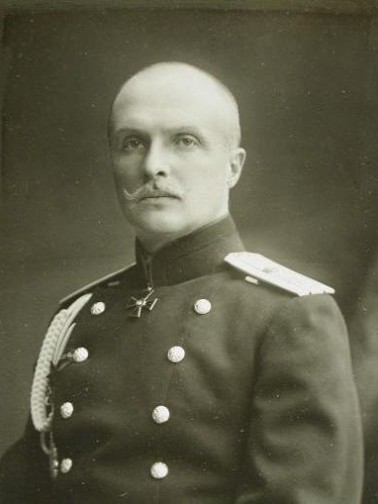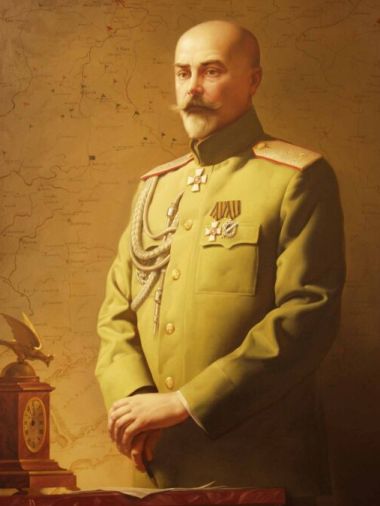Мы продолжаем напряженно работать, чтобы улучшить наш сайт и перевести его на другие языки. Русская версия этой страницы еще не совсем готова. Поэтому мы представляем здесь пока английскую версию. Мы благодарим вас за понимание.
Белая гвардия
Михаилом Булгаковом
The Civil War in Kiev
Mikhail Bulgakov described the Russian civil war which followed the October Revolution in his novel The White Guard. At first, it was published as a feuilleton in the literary magazine Rossiya in 1925. The magazine, however, ceased to exist before the series was finished and the novel was only published in Russia in 1966.
The White Guard describes how the family Turbin, supporters of the Tsar, survived the civil war between the Whites, the Reds, the Imperial German Army and the Ukrainian nationalists in Kiev. The novel contains many autobiographical elements: Nikolay Turbin, the younger brother in the novel, was inspired by Bulgakov's younger brother Nikolay Afanasievich Bulgakov (1898-1966). And the home of the Turbins is the house of the Bulgakov family in Kiev, a building that is well preserved, and which hosts the Mikhail Bulgakov Museum today.
When the first two parts of The White Guard were published in Rossiya, Bulgakov was invited to make a stage adaptation of it. The piece was called The Days of the Turbins. It was produced in the Moscow Art Theatre MKhAT, and it was a huge success.
Before the October Revolution, Ukraine, the home country of Mikhail Bulgakov, was divided between the Russian Empire and the Austro-Hungarian Empire.
After the October Revolution, many consecutive governments were formed, which often disappeared quickly. In 1917, the Ukrainian People's Republic was proclaimed. At first, it was part of the Russian republic, but on January 25, 1918, it became independent. During its short existence, the People's Republic knew several political transformations and evolved from a socialist to a nationalist republic, led by the publicist, writer, journalist, politician and statesman Simon Vasylyovych Petlyura (1879-1926).

Simon Vasylyovych Petlyura
On April 29, 1918, while Kiev and other parts of Ukraine were occupied by the Imperial German Army, the Ukrainian People's Republic of Petlyura got overthrown by the Ukrainian State, led by Hetman Pavlo Petrovich Skoropadsky (1873-1945). Skoropadsky however, was shunned by the other Ukrainian nationalists because he would have been too closely associated with the rich landowners and they accused him of collaborating with the German occupiers. He formed a cabinet of mostly Russian speakers and tsarists and he had committed to strive for an Ukrainian state in a federation with a restored Russian Empire.

Pavlo Petrovich Skoropadsky
In November 1918, the troops of Symon Petlyura were marching again to Kiev, while the German army withdrew from the city. Petlyura restored the Ukrainian People's Republic. Skoropadsky resigned on December 14, 1918 and fled to Berlin.
In the course of the year 1919, Petlyura had to defend his reign constantly against attacks of the Bolsheviks, the White Guards led by Anton Ivanovich Denikin (1872-1947), and the Romanians. The civil war was a brutal affair. All warring parties competed in the exercise of terror. Denikin 's troops were guilty of mass executions and looting, in what was later known as the White Terror. And an estimated 100,000 Jews were killed in pogroms perpetrated by both Petlyura 's nationalist separatists and the White Guards.

Anton Ivanovich Denikin
In the autumn of 1919, most of Denikin's White Guardists were defeated. In the meantime, the Bolsheviks had become the dominant force in Ukraine. On December 5, 1919, Petlyura went to Poland, where the Second Polish Republic was involved in the Polish-Soviet war. This war, which began in February 1919 and ended in March 1921, was a conflict between Soviet Russia and the Ukrainian Soviets on the one hand, and the Second Polish Republic and the Ukrainian People's Republic on the other hand, in order to control Ukraine and parts of Belarus.
On March 18, 1921, the fate of the Ukrainian People's Republic was finally determined by the Treaty of Riga between the Second Polish Republic and Soviet Russia. The newly created Ukrainian Soviet Socialist Republic became a member of the Soviet Union. But the Soviet government was hostile to the Ukrainian language and culture: there was a massive repression of Ukrainian poets, historians and linguists.
The Turbin family
In The White Guard, Bulgakov describes how the Turbin family experiences the various changes of power. The elder brother, Aleksey, is a 28 year old doctor in Kiev, the younger brother, Nikolay, is a 17 year old non-commissioned officer of the First Infantry Brigade, and the 24 year old sister, Elena, takes care of her brothers while her husband Sergey Thalberg serves the Hetman as a captain of the General Staff. The White Guard is a touching description of how this family experiences that the world is breaking down under the pressure of a social cataclysm and will never be the same again.
During the civil war, Bulgakov himself has been repeatedly mobilised as a doctor by the successive governments. After the Trearty Of Riga, he first tried to find opportunities to emigrate from a port on the Black Sea, but he gave up that plan after several failed attempts. After peregrinations in Vladikavkaz, Pyatogirsk, Tbilisi and Batum, Bulgakov went to Moscow with the intention «to stay there forever».
In the spring of 2012, the Russian TV channel Rossia 1 was extremely successful with the broadcasting of the impressive TV-series The White Guard by director Sergey Snizhkin. Your webmaster subtitled the series in English, French and Dutch.